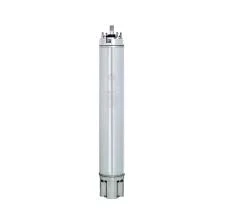Ene . 02, 2025 12:50 Back to list
how deep to put submersible well pump
How Deep to Install a Submersible Well Pump
When considering the installation of a submersible well pump, one of the most critical questions that homeowners and contractors face is how deep to position the pump. This decision can significantly impact the efficiency of the pump, the quality of the water supply, and the longevity of the system. There are several pivotal factors that contribute to determining the appropriate depth for your submersible well pump.
Understanding Submersible Well Pumps
Submersible pumps are designed to operate underwater, typically situated in a well. They draw water from deep underground and push it to the surface. Unlike jet pumps, which operate above ground and use suction to draw water, submersible pumps are inherently more efficient, particularly when dealing with deeper wells.
Factors Influencing Installation Depth
1. Water Table Depth The water table is the upper level of an underground surface in which the soil or rock is permanently saturated with water. Knowing the depth of your water table is essential, as your pump must be submerged below this level to ensure it operates effectively. In most regions, the water table can fluctuate due to seasonal changes or drought conditions, so it's wise to account for these variations when determining depth.
2. Well Diameter The diameter of your well can also affect how deep your submersible pump should be placed. In a narrower well, you may need to install the pump higher to avoid contact with the well casing. Additionally, the clearance around the pump is important for proper water flow; excessive buildup of sediment can clog the motor or decrease efficiency.
3. Pump Specifications Each submersible pump has a specific operational depth, usually listed in the manufacturer's specifications. Ensure that you select a pump that can function efficiently at your desired depth. Some pumps are designed for deeper wells and can handle more significant pressure, while others may not perform well beyond a certain depth.
how deep to put submersible well pump

4. Desired Water Flow Rate The flow rate, measured in gallons per minute (GPM), directly associates with the pump's depth. More profound pumps may have different performance metrics compared to shallower installations. If your application requires a higher flow rate, you might need to adjust the depth to achieve optimal performance.
5. Local Regulations and Guidelines Before installation, it is important to familiarize yourself with local regulations concerning well depths and pumping systems. Various regions have specific guidelines on well construction that can influence the depth at which you can legally install your pump.
Recommendations for Installation
- Depth Below the Water Table As a general rule, submersible pumps should be installed at a depth that is at least 10 feet below the static water level of the well. This ensures that the pump is continually submerged, which is crucial for its operation and prevents issues such as air locking.
- Consult with Professionals If you are unsure about the depth at which to install your pump, consulting with a professional well driller or a licensed pump installer can save you time and money. They have the experience to assess your specific site conditions and provide tailored recommendations.
- Test the System After installation, it is essential to test the system to ensure it is operating correctly. Monitor the flow rate and any signs of fluctuation that may indicate issues with sedimentation or blockage.
Conclusion
Deciding how deep to install a submersible well pump is a multifaceted consideration that requires careful attention to various factors, including the water table depth, well diameter, pump specifications, and local regulations. A well-planned installation will not only enhance the pump's efficiency and lifespan but also ensure a reliable water supply for your needs. By conducting thorough research and possibly seeking the guidance of professionals, you will be better equipped to make the best decision for your water system.
-
submersible-sump-pump-auto-drainage-for-crawlspaces
NewsAug.22,2025
-
solar-powered-stainless-steel-submersible-well-pump-setup
NewsAug.22,2025
-
stainless-steel-well-pump-flow-rate-optimization
NewsAug.22,2025
-
water-filled-submersible-pump-fish-farm-oxygenation
NewsAug.22,2025
-
submersible-pump-in-aquaculture-and-fish-farming
NewsAug.22,2025
-
deep-well-submersible-pump-for-drought-areas
NewsAug.22,2025
-
 submersible-sump-pump-auto-drainage-for-crawlspacesCrawlspaces, those narrow areas beneath homes, are prone to water accumulation due to leaks, groundwDetail
submersible-sump-pump-auto-drainage-for-crawlspacesCrawlspaces, those narrow areas beneath homes, are prone to water accumulation due to leaks, groundwDetail -
 solar-powered-stainless-steel-submersible-well-pump-setupHarnessing solar energy to power stainless steel submersible well pumps is a sustainable and coDetail
solar-powered-stainless-steel-submersible-well-pump-setupHarnessing solar energy to power stainless steel submersible well pumps is a sustainable and coDetail -
 stainless-steel-well-pump-flow-rate-optimizationIn various applications like agriculture, domestic water supply, and industrial use, the flow rate oDetail
stainless-steel-well-pump-flow-rate-optimizationIn various applications like agriculture, domestic water supply, and industrial use, the flow rate oDetail
